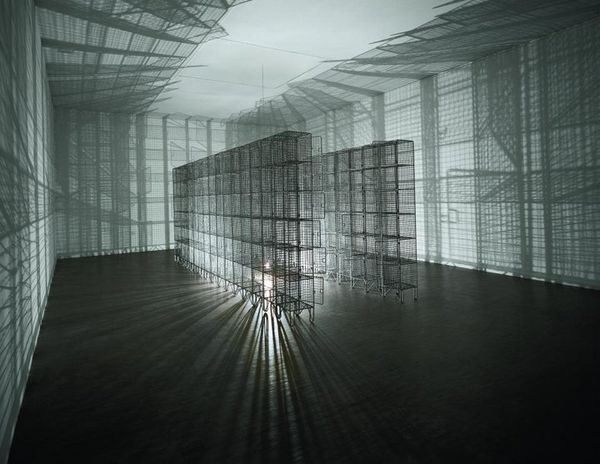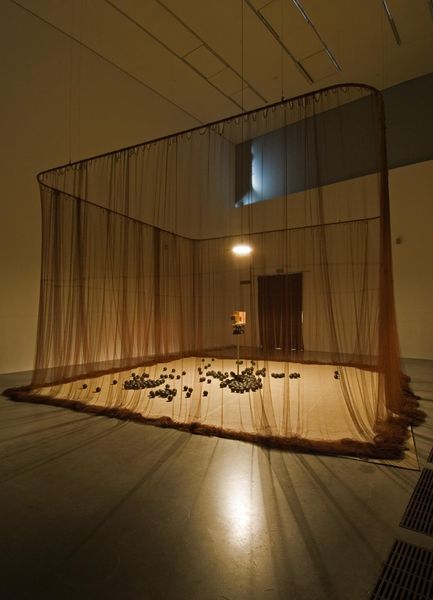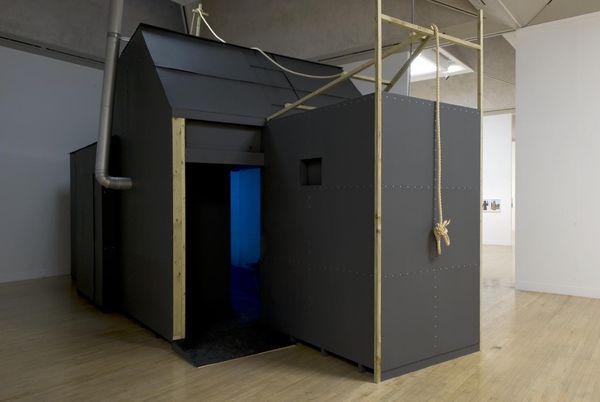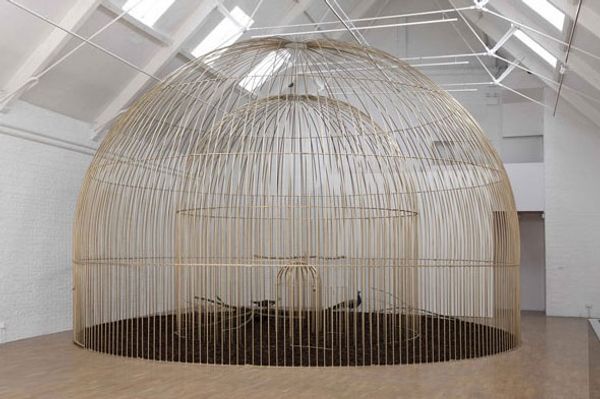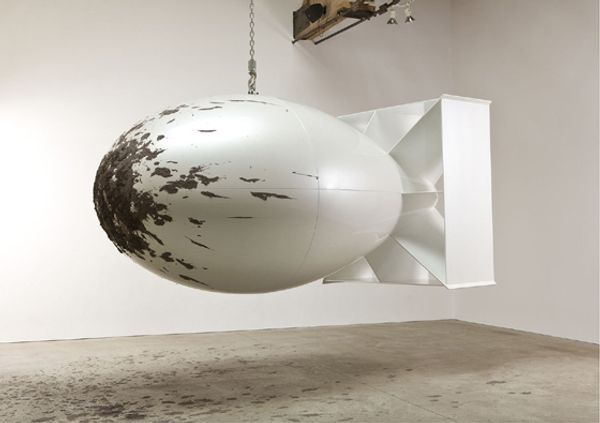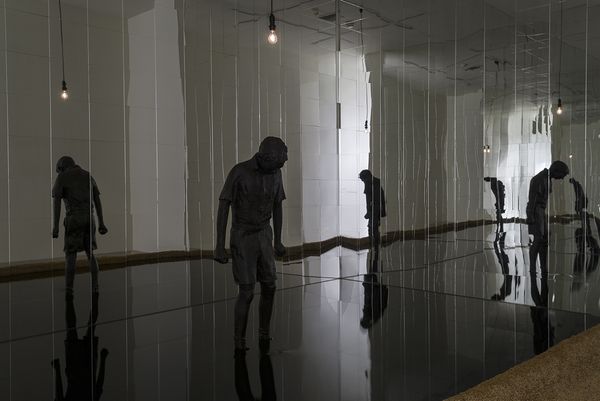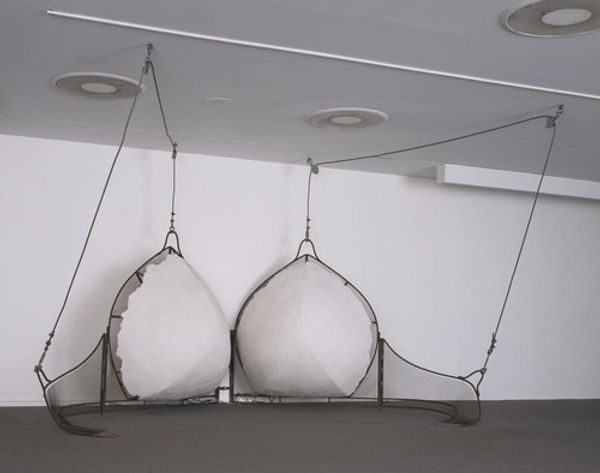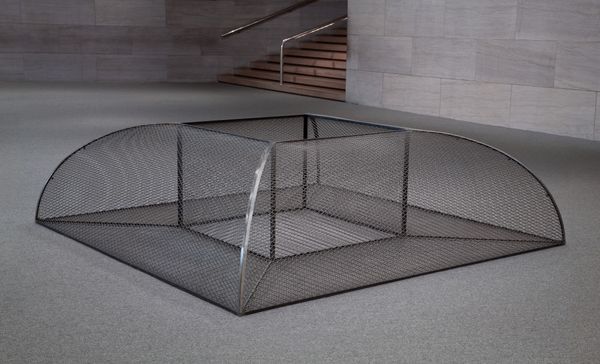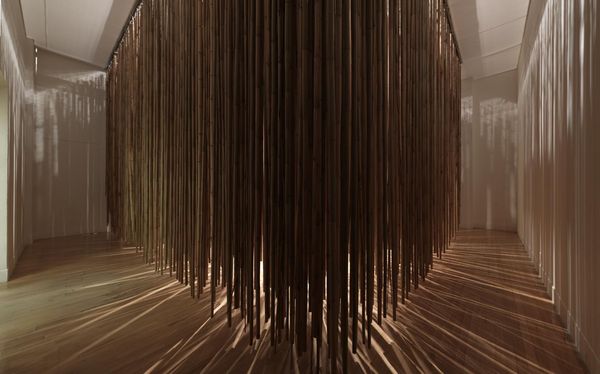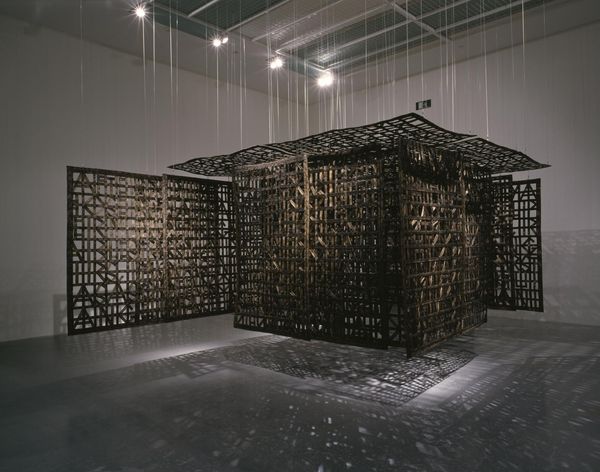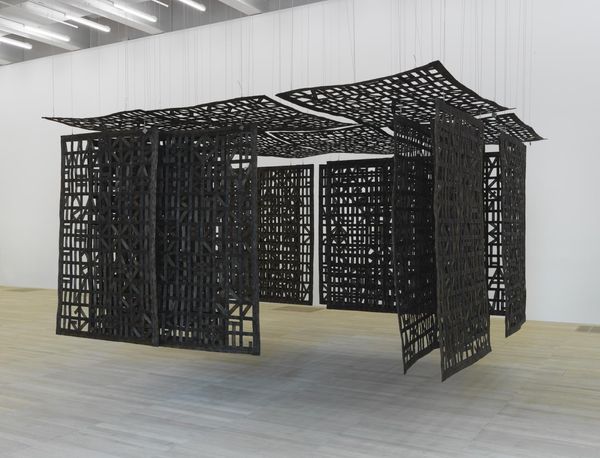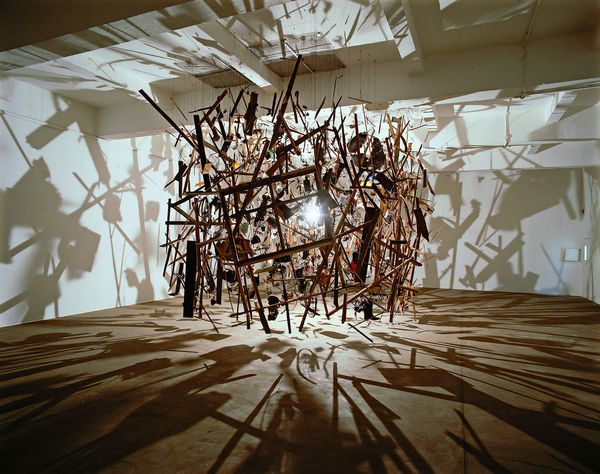
Copyright: Louise Bourgeois,Fair Use
Editor: This is Louise Bourgeois's *Cell XXVI*, from 2003, a mixed-media assemblage incorporating metal, sculpture, and mirrors. I’m struck by the sense of confinement it evokes, and how the reflective surfaces seem to multiply and distort what’s inside. What do you see when you look at this piece? Curator: The cage itself acts as a powerful signifier, doesn't it? Bourgeois often used cell-like structures to represent psychological spaces, exploring themes of trauma and memory. What do you make of the fleshy forms inside, seemingly caught between the mirror and the bars? Editor: They seem vulnerable, almost trapped, reflected endlessly. It's unnerving. Curator: Consider the mirror – a loaded symbol across cultures. Mirrors aren't just about vanity; they represent the self, truth, but also deception and illusion. Bourgeois plays with these multiple layers. The flesh seems abject, helpless. Does the mirror offer solace, or amplify the sense of being exposed, vulnerable, imprisoned? Editor: I guess both? It’s unsettling that we can see them, but they can also see themselves endlessly. It makes me think of body image and objectification. Curator: Precisely! And cages – what primal fears do they trigger? In cultural memory, cages are about capture, control, the loss of autonomy. Bourgeois masterfully uses this symbolism to tap into deep-seated anxieties. Editor: Seeing it that way gives the work more emotional depth, linking personal experience to larger cultural fears about control and visibility. Curator: Indeed. Art at its most potent allows us to touch that rawness. Editor: Definitely given me food for thought about symbols and their effect, I never considered it that way. Curator: Symbols echo through time; our engagement changes alongside them.
Comments
No comments
Be the first to comment and join the conversation on the ultimate creative platform.
